Exploring Continents | Chapter 7 | Geography | 8th Social Science - Antarctica | 8th Social Science : Geography : Chapter 7 : Exploring Continents: Africa, Australia and Antarctica
Chapter: 8th Social Science : Geography : Chapter 7 : Exploring Continents: Africa, Australia and Antarctica
Antarctica
Antarctica
Location and Size
Antarctica is a unique continent but
it does not have a native population. There is no country in Antarctica.
Antarctica is the southernmost and fifth-largest continent in the world. Since
it is located in the polar region, it is the coldest continent with a permanent
cover of ice. It is separated from the rest of the world by the icy water of
the southern portions of the Indian, Atlantic and Pacific Oceans. It covers
about 9.3% of the earth surface with an area of over 14 million sq km. This
continents landform consists of some mountain ranges, peaks, valleys, glaciers
plateau, ice shelf, lakes and volcanoes. The length of the Trans-Antarctic
mountain is 3200 km which divides the entire continent into two halves:
1. West
Antarctica
2. East Antarctica
The West Antarctica faces the
Pacific Ocean. The Antarctic Peninsula which points towards the South America
shows that it is the continuation of the Andes mountain range. The East
Antarctica faces the Atlantic and the Indian Oceans. The Mt. Erebus in this
region is an active volcano. It is located in the Ross Island.
It is the only continent called
white continent. In some places its ice cap is 4,000 meters deep.
Scientists of any
country are free to conduct experiments and collect data from Antarctica. Hence
it is called 'continent of Science'.
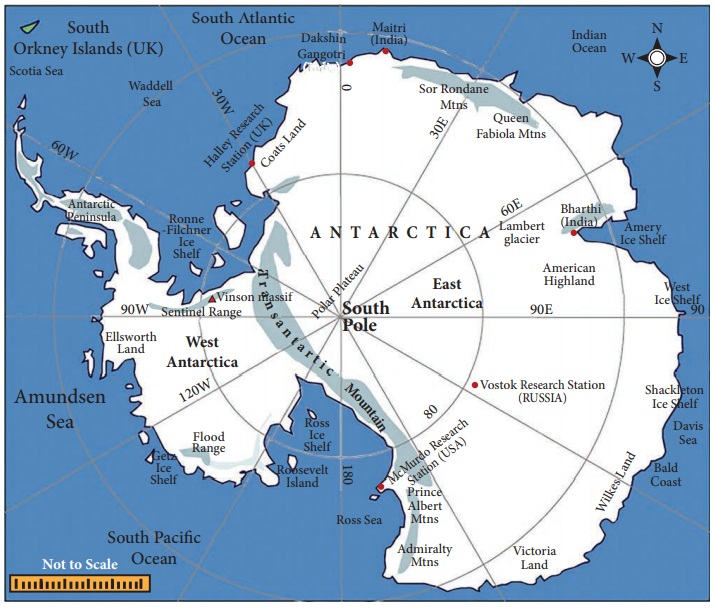
Climate
The climate of Antarctica is freezing cold, because of its distance from the Equator. During the months of May,June and July (winter period of Antarctica) the sun never rises in this region. So, the temperature at the South Pole falls to -90ºC. In the summer months of December, January and February, the sun never sets and there is a continuous day light. The summer temperature is about 0ºC. Extremely Cold and icy winds blow throughout the year.
Antarctica is the
largest piece of ice on the surface of Earth. About 70% of Earth’s fresh water
is in the Antarctic ice cap.
Flora and Fauna
Since the temperature is below
freezing point almost throughout the year, no major vegetation is found in this
continent. Simple plants like algae, mosses, liverworts, lichens and
microscopic fungi can survive and grow in Antarctica. Some algae live in the
snow, while other plants grow on the coastal rocky land that is ice free. A few
species of plants, such as plankton, algae and mosses are seen in and around
Antarctica’s fresh and saltwater lakes.
Small red fish called krill are
found in large shoals .It is the food for many warm blooded sea animals. The
living creatures of this region are include whales, seals, walrus and sea birds
like penguins, albatross, polar Skua and Stout. The blue whale is the largest
animal which feeds on plankton. All these animals and birds have a thick layer
of fat called blubber which helps them to withstand the cold condition. Penguin
birds in Antarctica cannot fly. They have webbed feet and flipper instead of
wings. Small invertebrates are the only land animals which lives in the
continent.
Vinson Massif (5140m)
is the highest peak in Antarctica. It is located in the southern part of
Sentinel Range. Lambert glacier of this continent is the largest glacier in the
world.
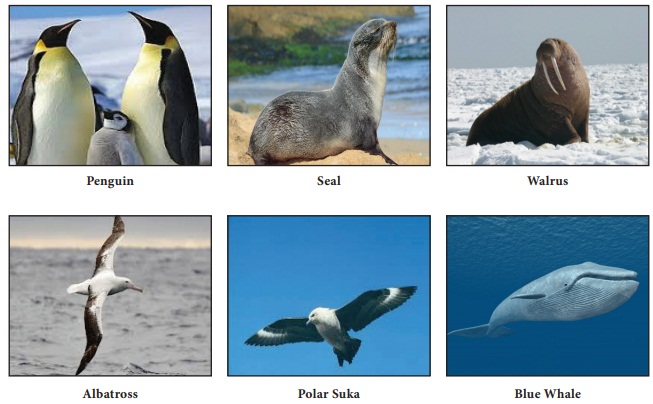
Minerals
Scientific studies show that the
Antarctic continent is to be rich in gold, platinum, nickel, copper and
petroleum. Traces of chromium, lead, molybdenum, tin, uranium, and zinc are
also seen. The possible resources of this region also include silver, platinum,
iron ore, cobalt, manganese and titanium. Coal and hydrocarbons have been
explored in minimal non-commercial quantities.
1. Mcmurdo is the largest
research station in Antarctica. It was set up by the United States of America.
2. Dakshin Gangotri
was the first Indian Scientifi c research base station in Antarctica
The international agreement on this
continent does not permit the extraction of minerals. So, the extraction of
minerals does not take place.
Expedition to Antarctica
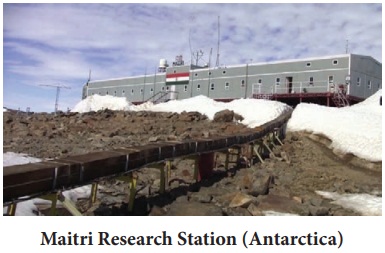
In 1912, British and Norwegian teams
reached the South Pole. Indian expedition team to Antarctica had 21 members
with Dr.S.Z.Quasim as its leader. The team left Goa on 6th December 1981 and
landed in Antarctica on 9th January 1982. Dakshin Gangotri, the first Indian
scientific research station was established in this continent. Maitri and
Bharathi are the other research stations of India in Antarctica.
Aurora
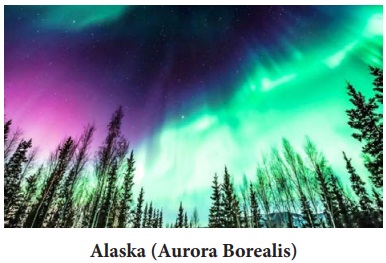
A natural Curtain of combination of
bright pink, red and green colour light that appears in the sky near the north
and south magnetic poles is called Aurora. The effect is caused by the
interaction of charged particles from the sun with atoms in the upper
atmosphere. It is also called Aurora Australis or Southern Lights in the South
Pole and Aurora Borealis or Northern Lights in the North Pole. These amazing
colours appear in the earth’s sky, especially in the high latitudinal countries
like Alaska in the north and New Zealand of Falkland in the south.
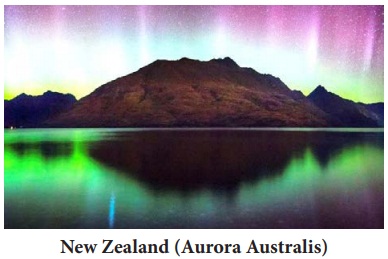
Related Topics